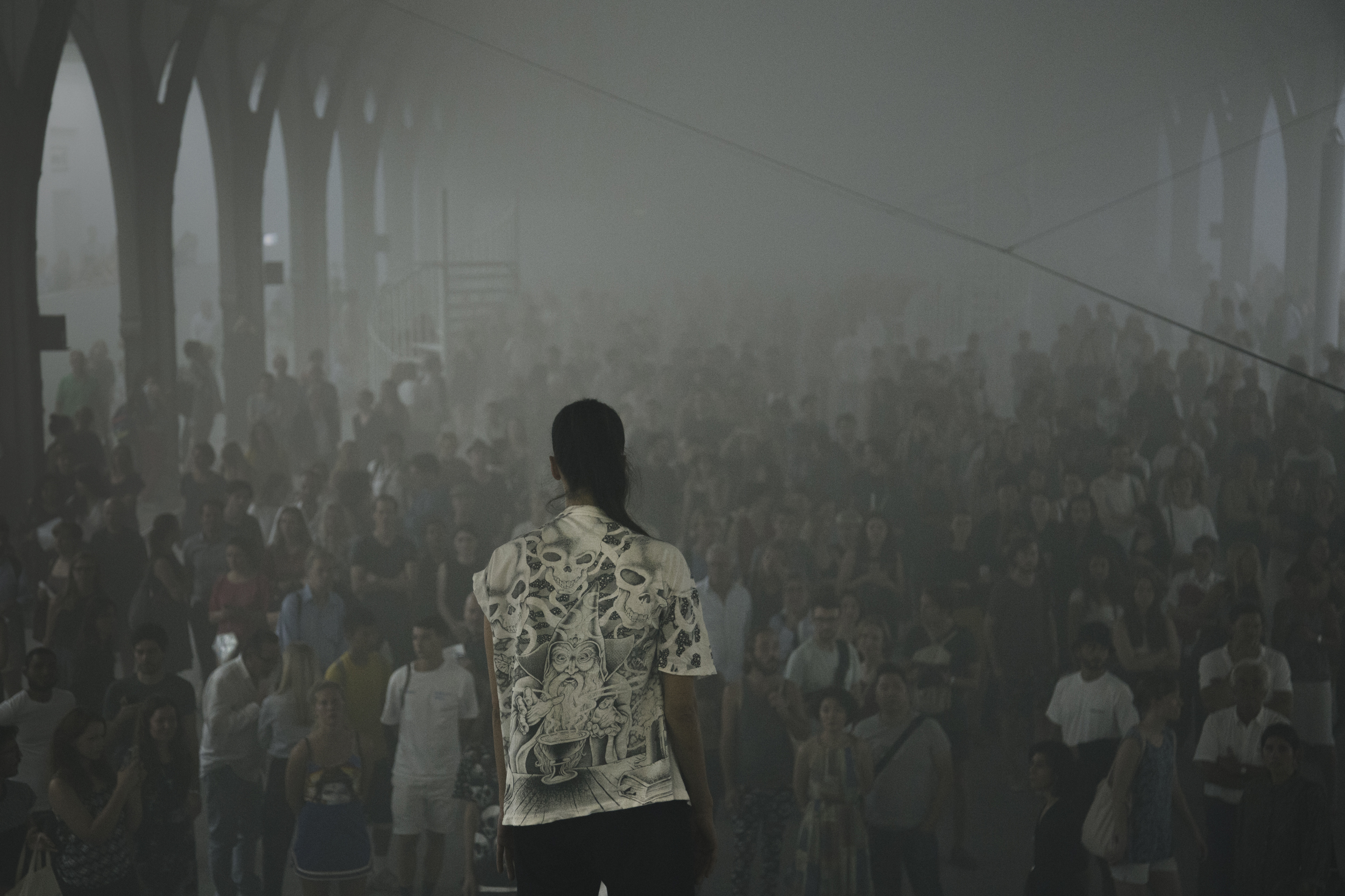In the fall and winter of 2015, Anne Imhof (born in Gießen, 1978, lives in Frankfurt) showed Forever Rage, a review of her two work cycles Rage and Deal. With this collage of pieces combining her last exhibition and performance, she won the Preis der Nationalgalerie 2015. In the fall 2016 Anne Imhof returned to Berlin with her award winner presentation Angst II.
Angst is an opera in three acts that stretch temporally and spatially over three stations: Kunsthalle Basel, Berlin’s Nationalgalerie – Hamburger Bahnhof and La Biennale de Montréal presented three exhibitions with the work of Anne Imhof in 2016 that, like three acts, were linked to one another. A first act was presented by the artist in June 2016 at Kunsthalle Basel. Angst II in Berlin formed the climax and turning point of this work complex. Anne Imhof concluded the series of works with a third part that she developped for La Biennale de Montréal. At Hamburger Bahnhof, the artist presented a pictorial composition for a limited time for ten days, consisting of music, text, sculptural elements and actors, falcons, and controlled drones that formed an overall picture.
Angst II divided the historic hall of Hamburger Bahnhof with a tightrope and a dense fog made the architecture blur. The music of the piece embraced the entire exhibition space and subjected the painting to its own rhythm. While in the act at Kunsthalle Basel songs appeared as arias in a rather temporal order and the march, waltz, and ballad took on a role, the musical composition at Hamburger Bahnhof was playing over individual systems. These spatial sound elements evoked memories of the stage set up of a rock concert or the house PA system.


